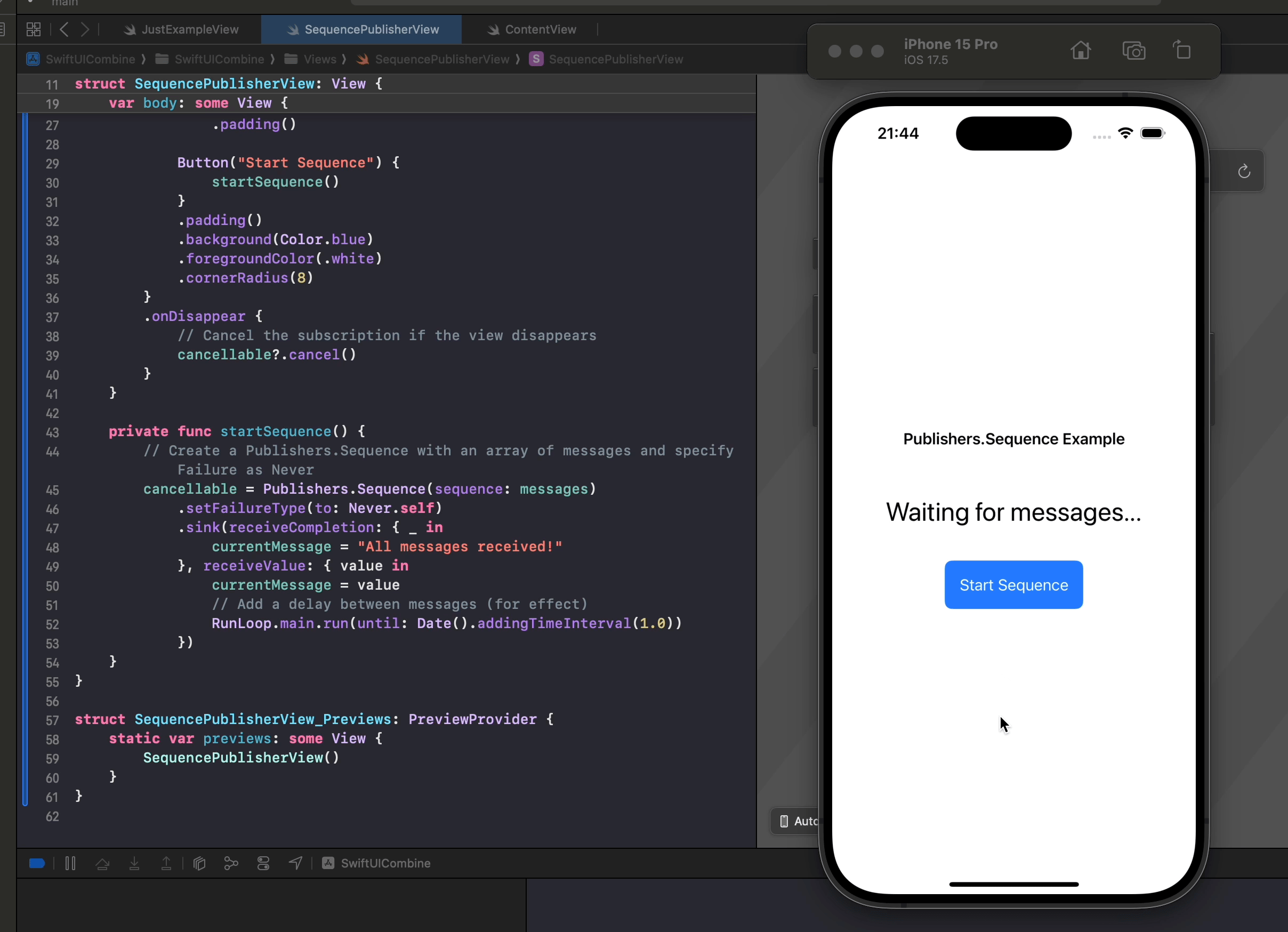In SwiftUI, Combine provides powerful tools to handle asynchronous data, including Publishers.Sequence, which converts a sequence (like an array) into a Combine publisher. This is especially useful when you need to work with multiple pieces of data that should be processed or displayed sequentially.
What is Publishers.Sequence?
Publishers.Sequence emits each element in a sequence one by one, completing after all elements have been emitted. This publisher is useful when you want to process a predefined set of values or handle a collection of data items reactively.
In this article, we’ll create a SwiftUI view that displays a sequence of messages using Publishers.Sequence.
Example SwiftUI Screen with Publishers.Sequence
Here’s a SwiftUI screen that demonstrates how to use Publishers.Sequence to emit each message in an array, displaying them one by one in the UI.
import SwiftUI
import Combine
struct SequencePublisherView: View {
// State variables to store the current message and the subscription
@State private var currentMessage: String = "Waiting for messages..."
@State private var cancellable: AnyCancellable?
// Sample array of messages to display
private let messages = ["Hello", "Welcome to SwiftUI!", "This is Combine in action!", "Enjoy learning!"]
var body: some View {
VStack(spacing: 20) {
Text("Publishers.Sequence Example")
.font(.headline)
.padding()
Text(currentMessage) // Display the current message
.font(.title)
.padding()
Button("Start Sequence") {
startSequence()
}
.padding()
.background(Color.blue)
.foregroundColor(.white)
.cornerRadius(8)
}
.onDisappear {
// Cancel the subscription if the view disappears
cancellable?.cancel()
}
}
private func startSequence() {
// Create a Publishers.Sequence with an array of messages and specify Failure as Never
cancellable = Publishers.Sequence(sequence: messages)
.setFailureType(to: Never.self) // Explicitly set Failure type to Never
.sink(receiveCompletion: { _ in
currentMessage = "All messages received!"
}, receiveValue: { value in
currentMessage = value
// Add a delay between messages (for effect)
RunLoop.main.run(until: Date().addingTimeInterval(1.0))
})
}
}
struct SequencePublisherView_Previews: PreviewProvider {
static var previews: some View {
SequencePublisherView()
}
}
Explanation of the Code
- State Variables:
@State private var currentMessage: Holds the message to be displayed. It starts with a placeholder text and updates as each message in the sequence is received.@State private var cancellable: Holds the subscription to the sequence publisher so that we can cancel it if the view disappears.
- Array of Messages:
private let messages: A predefined array of strings that will be published sequentially. Each message will appear on the screen one by one.
- startSequence() Method:
Publishers.Sequence(sequence: messages): This creates a publisher that will emit each message in themessagesarray sequentially..setFailureType(to: Never.self): This step sets the failure type of the publisher toNever, asPublishers.Sequencedoes not produce errors. This resolves the requirement for an explicit failure type..sink: Thesinksubscriber receives each emitted value and updatescurrentMessage. After each update, there’s a brief delay (RunLoop.main.run) to simulate a pause before displaying the next message.receiveCompletion: When all messages are received, this handler setscurrentMessageto a final completion message.
- Button to Start Sequence:
- The “Start Sequence” button triggers the
startSequence()method, initiating the sequence of messages.
- The “Start Sequence” button triggers the
Summary
This example showcases how Publishers.Sequence can convert an array into a publisher that emits each element in order. The approach is useful for displaying a predefined list of messages, animations, or steps in a process sequentially. Using Combine’s reactive pattern, SwiftUI allows us to handle this data flow smoothly, updating the UI as each new value arrives.
This reactive approach can scale to handle more complex data needs and offers a cleaner way to manage sequences, making Publishers.Sequence a valuable tool in your SwiftUI toolkit.
